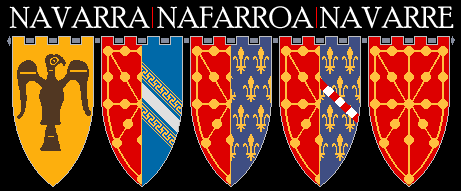Starting in the 19the century, the families that make up the
current base of the Brotherhood of Our Lady of Aránzazu of Lima were the
leaders of an intense expansion and settling process in the United States of
America as a result of their commercial and production activities.
This expansion has three main focus areas: the East Coast,
centered in New York; the West Coast, centered in San Francisco and Los
Angeles, and the South, centered in Atlanta.
New York became the center of the commercial and financial
activities of these families, who moved there, creating commercial headquarters
and integrating themselves into the commercial and financial activity of that
place.
On the West Coast, their bases of operations were the large
ports, because that’s where their commercial activities with the Far East on
the clipper lines were based as their activities grew in that part of the
Americas.
The implantation of the families of the Brotherhood in the
South was based on a prior relationship of these families with the great cotton
growing families in the Southern States. At the end of the American Civil War,
and the ruin of the losing side, they acquired large swathes of cotton lands
and created a strategic production and commercial base in Atlanta.
The fact that these Basque-descendant families from Peru
settled in the United States did not mean any loss of their connection to Peru,
nor did it mean the loss of their connection to their founding principles. It
was rather quite the opposite: it helped reinforce them. We cannot forget that
the families that made up the Brotherhood starting in the second half of the
19thcentury did so as an act of vindication of that historical grouping of
Basques. It was a decision that sought to defend the founding principles of the
Brotherhood while resisting both the Peruvian Government’s decision to dissolve
it and the acceptance of this dissolution on the part of another group which
decided to found a guild.
Keeping the idea and structures of the Brotherhood alive
served to reinforce one of the special, and indeed rather unique, elements of
the Brotherhood: its independence to work apart from all civil and religious
organizations: starting in 1865, the Brotherhood only had to answer to itself
and its members.
From that moment on, aided by the commitment of its members,
it has maintained a high level of both “internal” activity, preserving and
caring for the heritage received, and external, by creating museums in houses,
recovering the archives of the sister guilds and brotherhoods that had been
created in the Americas (such as in Chile or Potosí); conservation and archive
work; supporting and encouraging academic works; collaborating in paying homage
to the work of the Basques in Peru, such as that of the Passionists in the
Peruvian Amazon jungle; sharing the history of the Brotherhood and the Basques
in that country; and continuing the leading mission of this group: to meet the
needs of the Basques in Lima.
As it’s been doing for almost 500 years.


